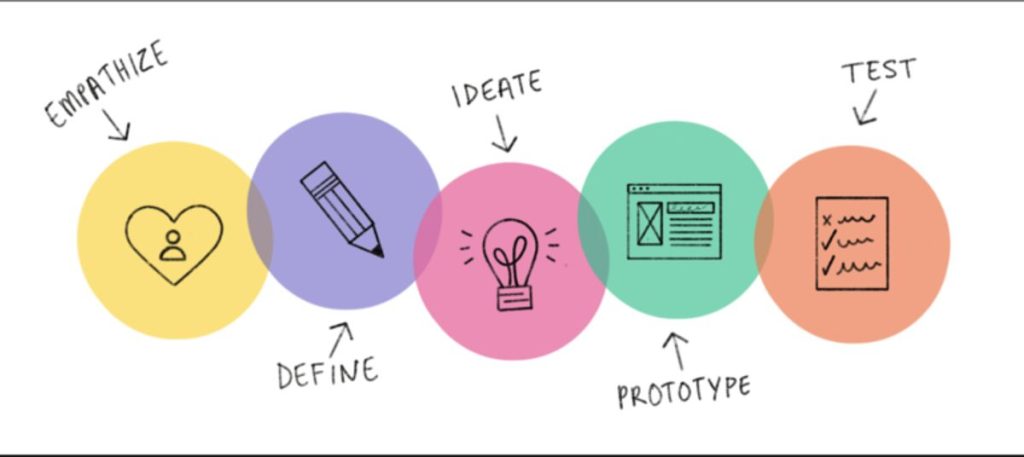Navigating the world of taxes can be tricky, but understanding tax deductions is key to maximizing your savings. Tax deductions can lower your taxable income, which means you could pay less in taxes and keep more money in your pocket. This article will highlight essential tax deductions you can take advantage of in 2024 to help you save money and make informed financial decisions.
Key Takeaways
- Choosing the right filing status can lead to more savings.
- Don’t overlook deductions for things like home office expenses and medical costs.
- Maximize your contributions to retirement accounts like IRAs and HSAs.
- Plan your finances at the end of the year to optimize your tax situation.
- Utilize tax credits to reduce your tax bill and increase your refund.
Understanding the Basics of Tax Deductions
What Are Tax Deductions?
A tax deduction is a way to lower your taxable income, which means you pay less in taxes. The less you earn on paper, the less you owe! You can choose between two main types of deductions: the standard deduction or itemized deductions.
How Do Tax Deductions Work?
When you file your taxes, you can either take the standard deduction, which is a fixed amount, or itemize your deductions, which means listing out all your eligible expenses. Here’s a quick look at how they compare:
| Type of Deduction | Description | Who Should Use It? |
|---|---|---|
| Standard Deduction | A flat amount deducted from your income. | Most people, especially if expenses are low. |
| Itemized Deductions | Specific expenses you can deduct. | Those with high expenses like medical or mortgage interest. |
Common Misconceptions About Tax Deductions
Many people think tax deductions are the same as tax credits, but they are not! Deductions reduce your taxable income, while credits reduce the amount of tax you owe directly. Here are some common myths:
- Myth 1: All expenses can be deducted. (Not true! Only specific ones qualify.)
- Myth 2: You can’t claim deductions if you take the standard deduction. (You can still claim certain deductions like student loan interest!)
- Myth 3: Deductions are only for the wealthy. (Everyone can benefit from deductions!)
Understanding tax deductions can help you keep more money in your pocket. Always keep good records and consult a tax professional if you’re unsure about what you can deduct.
Choosing the Right Filing Status
When it comes to filing your taxes, choosing the right filing status can make a big difference in how much you owe or get back. Here’s a quick guide to help you understand your options:
Single vs. Married Filing Jointly
- Single: This status is for those who are not married. It usually means a lower standard deduction, which is $14,600 in 2024.
- Married Filing Jointly: If you’re married, this option often gives you a higher standard deduction, which can be beneficial for your tax return.
Head of Household Benefits
- To qualify as Head of Household, you must pay more than half of the household expenses and have a dependent. This status offers better tax rates and a higher standard deduction of $21,900 in 2024.
Qualifying Widow(er) Considerations
- If your spouse has passed away, you might qualify as a Qualifying Widow(er) for up to two years. This status allows you to use the same benefits as Married Filing Jointly, which can be a great help during a tough time.
Understanding your filing status is key to maximizing your tax benefits. Take the time to evaluate your situation and choose wisely!
Standard vs. Itemized Deductions
When it comes to filing your taxes, you have two main options: the standard deduction or itemized deductions. Each has its own benefits, and knowing which one to choose can help you save money.
Benefits of Standard Deductions
The standard deduction is a fixed amount that reduces your taxable income. For 2024, the standard deduction numbers to beat are:
- Single and married filing separately taxpayers: $14,600
- Married filing jointly taxpayers: $29,200
This means if you take the standard deduction, you can simply subtract these amounts from your income without needing to provide any receipts or proof of expenses.
When to Consider Itemizing
Itemizing deductions can be beneficial if your total deductible expenses exceed the standard deduction. Here are some common itemized deductions:
- Unreimbursed medical expenses
- Charitable donations
- Mortgage interest
If you think your itemized deductions will be higher than the standard deduction, it’s worth taking the time to list them out.
Common Itemized Deductions
Here’s a quick look at some common itemized deductions:
| Deduction Type | Description |
|---|---|
| Medical Expenses | Expenses exceeding 7.5% of your adjusted gross income |
| Charitable Contributions | Cash or property donations to qualified charities |
| Mortgage Interest | Interest paid on your home loan |
Choosing the right deduction method can significantly impact your tax refund. Always keep good records and consult with a tax professional if you’re unsure about what you can deduct.
Maximizing Retirement Contributions
Traditional vs. Roth IRA
When it comes to retirement savings, choosing between a Traditional IRA and a Roth IRA can be a big decision. Traditional IRAs let you contribute pre-tax dollars, which can lower your taxable income now. On the other hand, Roth IRAs allow you to withdraw money tax-free in retirement, but you pay taxes on your contributions now. Think about your future tax situation when making this choice!
401(k) Contributions
If your employer offers a 401(k), make sure to take full advantage of it! In 2024, the 401(k) contribution limit increases to $23,000. If you’re 50 or older, you can contribute even more with catch-up contributions. This is a great way to boost your savings and reduce your taxable income at the same time.
Catch-Up Contributions for Older Adults
For those aged 50 and above, catch-up contributions are a fantastic opportunity. You can add an extra amount to your retirement accounts, helping you save more as you approach retirement. This can be especially helpful if you feel like you haven’t saved enough yet.
Remember, starting early and contributing regularly can make a huge difference in your retirement savings. The earlier you start, the more time your money has to grow!
Summary of Contribution Limits for 2024
| Account Type | Contribution Limit | Catch-Up Contribution (Age 50+) |
|---|---|---|
| Traditional IRA | $7,000 | $1,000 |
| Roth IRA | $7,000 | $1,000 |
| 401(k) | $23,000 | $7,500 |
By maximizing your contributions, you can set yourself up for a more secure financial future!
Leveraging Education Expenses
Lifetime Learning Credit
If you’re taking classes beyond high school, you might be able to use the Lifetime Learning Credit. This credit allows you to claim 20% of your qualified education expenses up to $10,000, with a maximum of $2,000 per tax return. This is a fantastic way to get some money back for your education costs!
American Opportunity Credit
If you’re a college student or supporting one, check out the American Opportunity Credit. This credit can give you up to $2,500 per student for the first four years of college. Plus, it’s refundable, meaning you could get up to $1,000 back even if you don’t owe any taxes!
Student Loan Interest Deduction
Don’t forget about the Student Loan Interest Deduction! You can deduct up to $2,500 of interest paid on your student loans from your taxable income. This can help lower your tax bill and make managing your loans a bit easier.
Pro Tip: Keep all your receipts and records of your education expenses. This will make it easier to claim these credits and deductions when tax season comes around.
Summary of Education Tax Benefits
Here’s a quick look at the education tax benefits:
| Benefit | Maximum Amount | Eligibility Criteria |
|---|---|---|
| Lifetime Learning Credit | $2,000 | Graduate students, or those taking courses |
| American Opportunity Credit | $2,500 | Undergrad students for first four years |
| Student Loan Interest Deduction | $2,500 | Interest paid on qualified student loans |
By leveraging these education expenses, you can save money and make your education more affordable!
Taking Advantage of Health-Related Deductions
Medical Expenses Deduction
Did you know that you can deduct certain medical expenses? You may be able to deduct the medical and dental expenses you paid for yourself, your spouse, and your dependents during the taxable year. This includes costs like doctor visits, surgeries, and even some travel expenses related to medical care. To qualify, your total medical expenses must exceed 7.5% of your adjusted gross income (AGI). Keep track of all your receipts to maximize this deduction!
Health Savings Accounts (HSAs)
Health Savings Accounts (HSAs) are a fantastic way to save on taxes while preparing for medical expenses. Contributions to HSAs are tax-deductible, and the money grows tax-free. You can use these funds for qualified medical expenses without paying taxes on withdrawals. For 2024, individuals can contribute up to $4,150, and families can contribute up to $8,300. If you’re 55 or older, you can add an extra $1,000 as a catch-up contribution.
Flexible Spending Accounts (FSAs)
Flexible Spending Accounts (FSAs) are another option to consider. These accounts allow you to set aside pre-tax dollars for medical expenses. However, unlike HSAs, FSAs typically have a use-it-or-lose-it policy, meaning you must spend the funds within the plan year. For 2024, the contribution limit for an FSA is $3,200.
Taking advantage of these health-related deductions can significantly reduce your taxable income, leading to a bigger refund. Always keep good records and consult with a tax professional if you’re unsure about what you can deduct.
Making the Most of Charitable Contributions
When it comes to giving, not only can you make a difference, but you can also save on your taxes! Charitable contributions can be a smart way to lower your tax bill. Here’s how to make the most of your donations:
Cash Donations
You can generally deduct cash donations to qualified charities worth up to 60% of your adjusted gross income (AGI). This means if you give generously, you can significantly reduce your taxable income. Just remember, the deduction must be made to a qualified organization.
Non-Cash Donations
Donating items like clothes or furniture can also get you a tax deduction. Just keep the donation receipt! These small contributions can add up quickly, so don’t ignore them. Here are some examples of non-cash donations:
- Clothing
- Household items
- Furniture
Qualified Charitable Distributions (QCD)
If you’re 70½ or older, you can make a QCD from your IRA. This allows you to donate up to $105,000 directly to a charity without being taxed on the distribution. This is a great way to help others while also managing your taxable income.
Even small charitable contributions can add up to significant tax savings. Keep good records and make sure to claim every deduction you’re entitled to.
Important Limitations
While charitable contribution deductions are beneficial, there are limits. Generally, you may deduct up to 50 percent of your adjusted gross income, but 20 percent and 30 percent limitations apply in some cases. So, it’s essential to keep track of your donations and consult with a tax professional if you have questions.
By planning your charitable giving wisely, you can help those in need while also maximizing your tax benefits!
Understanding Tax Credits
Tax credits can be a fantastic way to save money on your taxes. Unlike deductions, which lower your taxable income, tax credits reduce the amount of tax you owe dollar-for-dollar. This means if you qualify for a $1,000 tax credit, your tax bill goes down by $1,000! Here’s a quick look at some important points about tax credits:
Difference Between Deductions and Credits
- Tax Deductions: Reduce your taxable income.
- Tax Credits: Directly reduce your tax bill.
Popular Tax Credits to Consider
Here are some tax credits you might want to check out:
- Child Tax Credit: Up to $2,000 per child under 17.
- Earned Income Tax Credit (EITC): For low to moderate-income workers, this can be a significant benefit.
- American Opportunity Credit: Helps with education costs for college students.
How Tax Credits Impact Your Refund
Tax credits can significantly boost your tax refund. If you owe $500 in taxes but have a $1,000 credit, you could receive a refund of $500!
Remember, not all tax credits are refundable. Some can only reduce your tax bill to zero, but they still provide great savings.
Understanding tax credits is essential for maximizing your savings. Make sure to explore all the options available to you!
Year-End Tax Planning Strategies
As the year comes to a close, it’s time to think about how to make the most of your tax situation. Planning ahead can save you money! Here are some strategies to consider:
Deferring Income
Deferring income means pushing some of your earnings into the next tax year. If you think you’ll be in a lower tax bracket next year, this can be a smart move. For example, you might ask your employer to delay a year-end bonus until January. This way, you won’t have to pay taxes on that income until the next year.
Accelerating Deductions
Accelerating deductions involves paying for things like medical expenses or business costs before the year ends. By doing this, you can claim those deductions on your current year’s tax return, which can lower your taxable income. This is especially useful if you expect to be in a higher tax bracket this year compared to next year.
Timing your financial moves can be a game-changer when it comes to taxes. A little planning can go a long way in maximizing your refund.
Tax-Loss Harvesting
This strategy allows you to offset gains by selling investments that have lost value. If you have more losses than gains, you can offset up to $3,000 of ordinary income on your tax return. Plus, any excess losses can be carried over to future years. Just remember to avoid buying the same or similar security within 30 days before or after realizing the loss.
Important Reminders
- Take all required minimum distributions (RMDs) if you’re over 73 to avoid penalties.
- Maximize contributions to your retirement accounts before the year ends.
- Make charitable donations to help others and potentially lower your tax bill.
By following these strategies, you can make the most of your tax situation and keep more money in your pocket. Don’t forget to download the full guide for all 2024 tax deadlines and strategies to consider by year-end!
Avoiding Common Tax Penalties
Reviewing Withholding and Estimated Taxes
To avoid penalties, it’s super important to check your tax withholding and estimated taxes throughout the year. Here are some tips:
- Adjust your W-4: Make sure your employer is withholding the right amount from your paycheck. You can use the IRS Tax Withholding Estimator to help.
- Quarterly estimated payments: If you have income that isn’t automatically taxed, like from a side job, consider making quarterly payments to avoid a big tax bill later.
- Stay informed: Keep up with any changes in tax laws that might affect your situation.
Avoiding Underpayment Penalties
To dodge underpayment penalties, you need to ensure you’re paying enough taxes during the year. Here’s how:
- Pay on time: Make sure to pay your taxes by the due date to avoid late fees.
- Check your payments: Regularly review your payments to ensure you’re on track.
- Use tax software: Consider using tax software to help you calculate your payments accurately.
Filing Your Taxes Correctly
Filing your taxes correctly is key to avoiding penalties. Here are some steps to follow:
- Double-check your forms: Make sure all your information is accurate before submitting.
- File on time: Don’t wait until the last minute to file your taxes. If you need more time, file for an extension.
- Keep good records: Organize your receipts and documents throughout the year to make filing easier.
Remember, avoiding penalties is all about being proactive! Keeping track of your taxes and making timely payments can save you from unnecessary stress and extra costs.
By following these tips, you can keep your tax situation in check and avoid those pesky penalties!
Utilizing Professional Help and Tax Software
When it comes to taxes, getting the right help can make a big difference. Using tax software or hiring a professional can save you time and money! Here’s how to decide which option is best for you:
Benefits of Using Tax Software
- Easy to Use: Tax software guides you step-by-step through the filing process, making it simple to complete your return.
- Error Checks: Many programs have built-in checks to catch mistakes before you submit your taxes.
- Quick E-Filing: You can e-file your return quickly, which means you might get your refund faster.
When to Consult a Tax Professional
- Complex Situations: If you own a business or have multiple income sources, a tax pro can help you navigate tricky tax laws.
- Life Changes: Major life events like marriage or buying a home can affect your taxes, and a professional can guide you through these changes.
- Maximizing Deductions: A tax expert can help you find deductions you might miss on your own.
Staying Updated with Tax Laws
Tax laws change often, and keeping up can be tough. Tax software usually updates automatically, but a professional can offer personalized advice. They can help you plan for future tax years and ensure you’re taking advantage of all available credits and deductions.
Remember, investing in professional help can save you more money in the long run by maximizing your refund and minimizing errors.
In a recent 2024 tax software survey, many users reported satisfaction with their chosen products, highlighting the importance of selecting the right tools for your tax needs. Whether you choose software or a professional, make sure you’re well-prepared for tax season!
Wrapping It Up: Your Path to Savings
In conclusion, making the most of your tax deductions can really help you save money in 2024. By understanding your options, like choosing the right filing status or taking advantage of deductions for things like medical expenses and home offices, you can keep more of your hard-earned cash. Don’t forget to check out tax credits, too, as they can give you a nice boost to your refund. Remember, a little planning goes a long way, so take the time to review your finances and make smart choices. With these tips, you’re on your way to maximizing your savings and enjoying a brighter financial future!
Frequently Asked Questions
What are tax deductions?
Tax deductions are amounts that you can subtract from your total income to lower the amount of income that is taxed. This can help you pay less in taxes.
How do tax deductions work?
When you claim a tax deduction, it reduces your taxable income. For example, if you earn $50,000 and have $5,000 in deductions, you only pay taxes on $45,000.
What’s the difference between standard and itemized deductions?
Standard deductions are a fixed amount set by the government, while itemized deductions are specific expenses you can list to reduce your taxable income.
Can I claim deductions for my student loans?
Yes! You can deduct up to $2,500 of the interest you paid on your student loans, which can help lower your taxable income.
What is a tax credit?
A tax credit directly reduces the amount of tax you owe. For example, if you owe $1,000 in taxes and have a $200 tax credit, you only pay $800.
How can I maximize my retirement contributions?
To maximize your retirement savings, contribute as much as you can to accounts like a 401(k) or IRA. These contributions can reduce your taxable income.
What should I do if I missed a tax deduction?
If you realize you missed a deduction, you may be able to amend your tax return to claim it if you’re within the allowed time frame.
Is it worth hiring a tax professional?
Hiring a tax professional can be beneficial if your tax situation is complex. They can help you find deductions and credits you might miss on your own.




